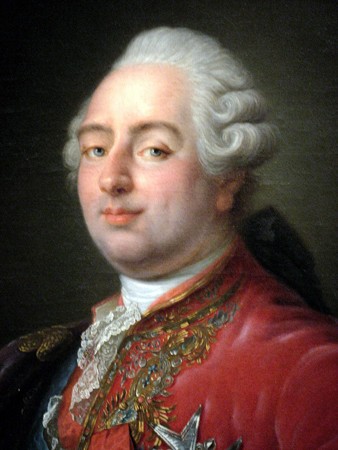Tuesday, 31 January 2023
Early sixteenth century pendant with Court connections
Another significant Anglo Saxon find from Harpole
Monday, 30 January 2023
A fourteenth century almanac decoded
Sunday, 29 January 2023
Lost Victorian architectural heritage
‘Outlander’ outrage
Saturday, 28 January 2023
King Henry III and the Chertsey - Westminster tiles
Friday, 27 January 2023
The Liturgical debate warms up again
Thursday, 26 January 2023
Hadrian’s Wall - a 1900th anniversary summary
Wednesday, 25 January 2023
Colour and classical statuary
Stylite once in residence
The development and richness of the Arthurian legend
Sunday, 22 January 2023
More decapitated Romans
The discovery of Coleshill Manor
Saturday, 21 January 2023
Martyred Monarchs: King Louis XVI and King Charles I
To be said every day between the 21st and 30th of January
In honour of the glorious memory of
LOUIS XVI of France and CHARLES I of England And for the good estate and virtue of all Christian Princes
Ant. IN the sight of the unwise he seemed to die and his departure was taken for misery; but he is in peace.
Let us pray
BLESSED Lord, in whose sight the death of thy saints is precious; We magnifie thy name for that abundant grace bestowed upon our late Martyred Soveraigns; by which they were enabled so chearfully to follow the steps of their blessed Master and Saviour, in a constant meek suffering of all barbarous indignities, and at last resisting unto bloud; and even then, according to the same pattern, praying for their murderers. Let their memory, O Lord, be ever blessed among us, that we may follow the example of their patience, and charity. And grant, that our Lands may be freed from the vengeance of their bloud, and thy mercy glorified in the forgiveness of our sins: and all
for Jesus Christ his sake. Amen.

Friday, 20 January 2023
Listing for five Catholic Churches in East Anglia
Tracey Rowland and George Weigel remember Cardinal Pell
Thursday, 19 January 2023
Reassembling the Newport Ship
Laodicea
Sunday, 15 January 2023
Customs in the calendar
Friday, 13 January 2023
The medieval pavement at Canterbury Cathedral
Thursday, 12 January 2023
A medieval Italian murder victim
Wednesday, 11 January 2023
Cardinal George Pell
The King of the Hellenes
Tuesday, 10 January 2023
Bayeux Tapestry - copying and reconstruction
Sunday, 8 January 2023
Civic life in Roman Anatolia
The wider effects of the ‘Little Ice Age’
An Elizabethan shipwreck at Dungeness
Saturday, 7 January 2023
Mothers and daughters
Lincolnshire - the Haxey Hood, Plough Jaggers and Hobby Horses
Friday, 6 January 2023
St Leo the Great on the Epiphany
Thursday, 5 January 2023
Old St Peter’s revisited
Looking at the medieval mosaics that survive from Old St Peter’s and which it illustrates and are dated to the end of the thirteenth century I was reminded of George Holmes’ very readable Rome, Florence and the Origins of the Renaissance which begins with a look at the last years of Papal Rome before the Avignon Papacy. In particular he draws attention to the artistic commissions associated with the Franciscan Pope Nicolas IV and the monumental statues commissioned by Pope Boniface VIII with their classical references. In particular he suggests artists were looking at uncovered paintings from the Imperial period and seeking to imitate or emulate them in the 1290s. Such resonances are surely there on the mosaics featured in this new exhibition.


